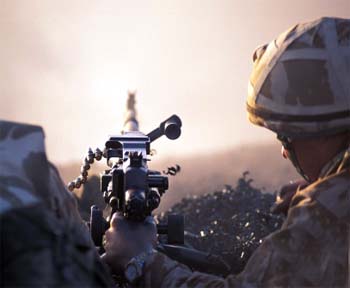Dec 28, 2025
Dec 28, 2025
 The goals behind the U.S. led Afghan war are lofty: bring the democracy in Afghanistan, build the nation, kill the killers and their partners who killed the innocent Americans in 2001 on September 11, put Taliban and Al-Qaeda out of business. But eight years into the war, the U.S. and its allied forces have not made many inroads and people and pundits are now raising questions similar to the ones that were raised in past during the other U.S. lead wars.
The goals behind the U.S. led Afghan war are lofty: bring the democracy in Afghanistan, build the nation, kill the killers and their partners who killed the innocent Americans in 2001 on September 11, put Taliban and Al-Qaeda out of business. But eight years into the war, the U.S. and its allied forces have not made many inroads and people and pundits are now raising questions similar to the ones that were raised in past during the other U.S. lead wars.
Can you bring a democracy in a nation where there are more illiterates than literates? No, you can’t.
It is neither easy nor quick to establish a democracy. If troops and teachers from foreign nations think they can teach Afghanis a Democracy 101 and then assign them a project to bring the democracy into their nation, they will find that both they and their students are failing. And to pass the course, it is going to take generations of highly educated Afghanis to understand the democracy’s pillars and pioneers, convince each and every tribe to abolish its autocratic rules that are in existence for centuries and persuade the tribe to become a part of the central government, and bring a much needed safety and stability in the region.
Can you a build or rebuild a nation when it is collapsing? No, you can’t. The rest of the world sees that now, and, in case of house called Afghanistan, crumbling is due to corruption, lawlessness, terrorism, and hostility. The bribe - givers and takers -are devoring one side, the outlaws are disintegrating the second side, the terrorists are damaging the front façade, and the hostile tribes are desolating the back wall of the country.
Can American treasury and American troops go on killing enemies of America living and hiding in a foreign nation or go on supporting a foreign nation’s pro-American government? Yes, they can, but they are unlikely to succeed. One past example of many years ago tells the story.
Example
American troops went to Nicaragua in 1912 to support Nicaragua’s conservative government, to stop civil war, and to protect American investments. Then in August 1925 the thirtieth President of the United States, Calvin Coolidge, withdrew the American troops. No sooner he did, the civil war in Nicaragua resumed.
Then in May 1926, President Coolidge sent marines back into Nicaragua and later increased the number of marines over the next months, but the civil war raged on. Finally, the President sent his personal envoy Henry Stimson to Nicaragua to solve the problem. Agreements were signed and the U.S. agreed to withdraw the troops by 1933 – 20 years later!
But the Nicaraguan General Sandino rejected the Stimson agreement. He killed some marines and Nicaraguans, and fled to jungles to organize military operations. Then he and his followers came to be known as Sandinistas waged wars for decades against the US-backed Anastasio Somoza.
Can something like this happen in Iraq or Afghanistan? Yes, it can. Can Taliban and Al Qaeda forces continue to wage wars against American-backed Hamid Karazi for a foreseeable future? Yes, they can.
Price
There are numerous examples in the world history of America’s engagement in foreign wars like the Nicaraguan war. The United States has good intentions but pays a heavy price in terms of blood, dolor, and dollars for themselves and the nation with whom they are involved.
Remain Home
In the end it is the Taliban and non-Taliban Afghanis who, on their own, will have to find a way to co-exist peacefully. If Afghanis ask for help, America may want to help them. If Afghanis attack America’s border, fight them. But until either circumstance occurs, remain home and be vigilant. Sometimes neither fixing nor punishing a nation is possible.
22-Nov-2009
More by : Vasant G. Gandhi